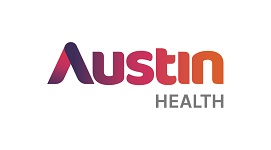Please use this identifier to cite or link to this item:
https://ahro.austin.org.au/austinjspui/handle/1/22138Full metadata record
| DC Field | Value | Language |
|---|---|---|
| dc.contributor.author | Fujii, Tomoko | - |
| dc.contributor.author | Belletti, Alessandro | - |
| dc.contributor.author | Carr, Anitra | - |
| dc.contributor.author | Furukawa, Toshi A | - |
| dc.contributor.author | Luethi, Nora | - |
| dc.contributor.author | Putzu, Alessandro | - |
| dc.contributor.author | Sartini, Chiara | - |
| dc.contributor.author | Salanti, Georgia | - |
| dc.contributor.author | Tsujimoto, Yasushi | - |
| dc.contributor.author | Udy, Andrew A | - |
| dc.contributor.author | Young, Paul J | - |
| dc.contributor.author | Bellomo, Rinaldo | - |
| dc.date | 2019-11-12 | - |
| dc.date.accessioned | 2019-12-04T01:53:26Z | - |
| dc.date.available | 2019-12-04T01:53:26Z | - |
| dc.date.issued | 2019-11-12 | - |
| dc.identifier.citation | BMJ Open 2019; 9(11): e033458 | - |
| dc.identifier.uri | https://ahro.austin.org.au/austinjspui/handle/1/22138 | - |
| dc.description.abstract | Vasoplegia is common and associated with a poor prognosis in patients with sepsis and septic shock. Vitamin C therapy in combination with vitamin B1 and glucocorticoid, as well as monotherapy in various doses, has been investigated as a treatment for the vasoplegic state in sepsis, through targeting the inflammatory cascade. However, the combination effect and the relative contribution of each drug have not been well evaluated. Furthermore, the best combination between the three agents is currently unknown. We are planning a systematic review (SR) with network meta-analysis (NMA) to compare the different treatments and identify the combination with the most favourable effect on survival. We will include all randomised controlled trials comparing any intervention using intravenous vitamin C, vitamin B1 and/or glucocorticoid with another or with placebo in the treatment of sepsis. We are interested in comparing the following active interventions. Very high-dose vitamin C (≥12 g/day), high-dose vitamin C (≥6 g/day), vitamin C (<6 g/day); low-dose glucocorticoid (<400 mg/day of hydrocortisone (or equivalent)), vitamin B1 and combinations of the drugs above. The primary outcome will be all-cause mortality at the longest follow-up within 1 year but 90 days or longer postrandomisation. All relevant studies will be sought through database searches and trial registries. All reference selection and data extraction will be conducted by two independent reviewers. We will conduct a random-effects NMA to synthesise all evidence for each outcome and obtain a comprehensive ranking of all treatments. We will use the surface under the cumulative ranking curve and the mean ranks to rank the various interventions. To differentiate between the effect of combination therapies and the effect of a component, we will employ a component NMA. This SR does not require ethical approval. We will publish findings from this systematic review in a peer-reviewed scientific journal and present these at scientific conferences. CRD42018103860. | - |
| dc.language.iso | eng | - |
| dc.subject | adult intensive & critical care | - |
| dc.subject | clinical trials | - |
| dc.subject | statistics & research methods | - |
| dc.title | Vitamin C therapy for patients with sepsis or septic shock: a protocol for a systematic review and a network meta-analysis. | - |
| dc.type | Journal Article | - |
| dc.identifier.journaltitle | BMJ Open | - |
| dc.identifier.affiliation | Australian and New Zealand Intensive Care Research Centre, Department of Epidemiology and Preventive Medicine, Monash University, Melbourne, Victoria, Australia | en |
| dc.identifier.affiliation | Department of Anaesthesia and Intensive Care, IRCCS San Raffaele Scientific Institute, Milan, Italy | - |
| dc.identifier.affiliation | Department of Health Promotion and Human Behaviour, School of Public Health, Kyoto University Graduate School of Medicine, Kyoto, Japan | en |
| dc.identifier.affiliation | Department of Intensive Care, Austin Health, Heidelberg, Victoria, Australia | - |
| dc.identifier.affiliation | Department of Pathology and Biomedical Science, University of Otago, Christchurch, New Zealand | - |
| dc.identifier.affiliation | Department of Health Promotion and Human Behaviour, School of Public Health, Kyoto University Graduate School of Medicine, Kyoto, Japan | - |
| dc.identifier.affiliation | Oncology, Inselspital University Hospital Bern, Bern, Switzerland | - |
| dc.identifier.affiliation | Division of Anesthesiology, Department of Anesthesiology, Pharmacology, Intensive Care and Emergency Medicine, Geneva University Hospitals, Geneva, Switzerland | - |
| dc.identifier.affiliation | Institute of Social and Preventive Medicine, University of Bern, Bern, Switzerland | - |
| dc.identifier.affiliation | Department of Healthcare Epidemiology, School of Public Health, Kyoto University Graduate School of Medicine, Kyoto, Japan | - |
| dc.identifier.affiliation | Department of Nephrology and Dialysis, Kyoritsu Hospital, Kawanishi, Japan | - |
| dc.identifier.affiliation | Department of Intensive Care, the Alfred, Melbourne, Victoria, Australia | - |
| dc.identifier.affiliation | Medical Research Institute of New Zealand, Wellington, New Zealand | - |
| dc.identifier.affiliation | Intensive Care Unit, Wellington Regional Hospital, Wellington, New Zealand | - |
| dc.identifier.affiliation | Department of Medicine, University of Melbourne, Melbourne, Victoria, Australia | - |
| dc.identifier.doi | 10.1136/bmjopen-2019-033458 | - |
| dc.identifier.orcid | 0000-0003-3854-4081 | - |
| dc.identifier.orcid | 0000-0003-3131-0565 | - |
| dc.identifier.orcid | 0000-0002-1650-8939 | - |
| dc.identifier.pubmedid | 31722954 | - |
| dc.type.austin | Journal Article | - |
| local.name.researcher | Bellomo, Rinaldo | |
| item.fulltext | No Fulltext | - |
| item.grantfulltext | none | - |
| item.cerifentitytype | Publications | - |
| item.languageiso639-1 | en | - |
| item.openairetype | Journal Article | - |
| item.openairecristype | http://purl.org/coar/resource_type/c_18cf | - |
| crisitem.author.dept | Intensive Care | - |
| crisitem.author.dept | Data Analytics Research and Evaluation (DARE) Centre | - |
| Appears in Collections: | Journal articles | |
Items in AHRO are protected by copyright, with all rights reserved, unless otherwise indicated.
